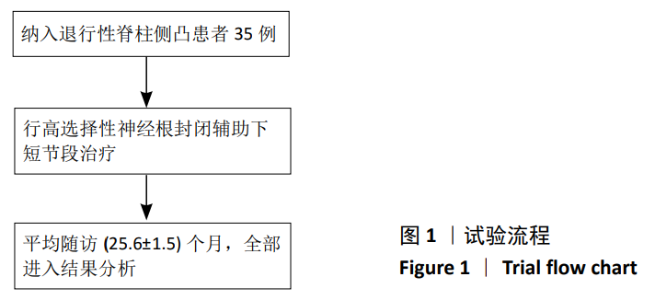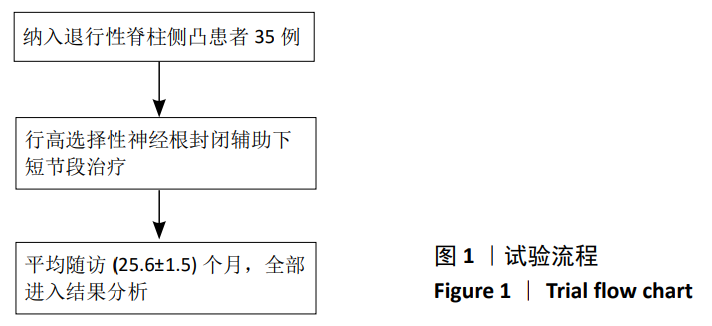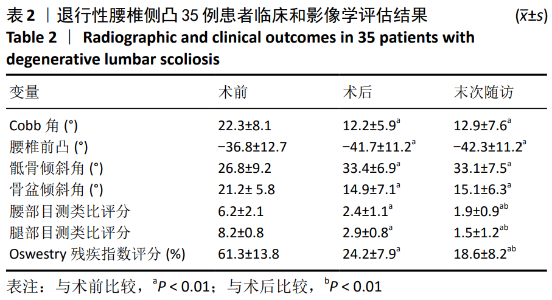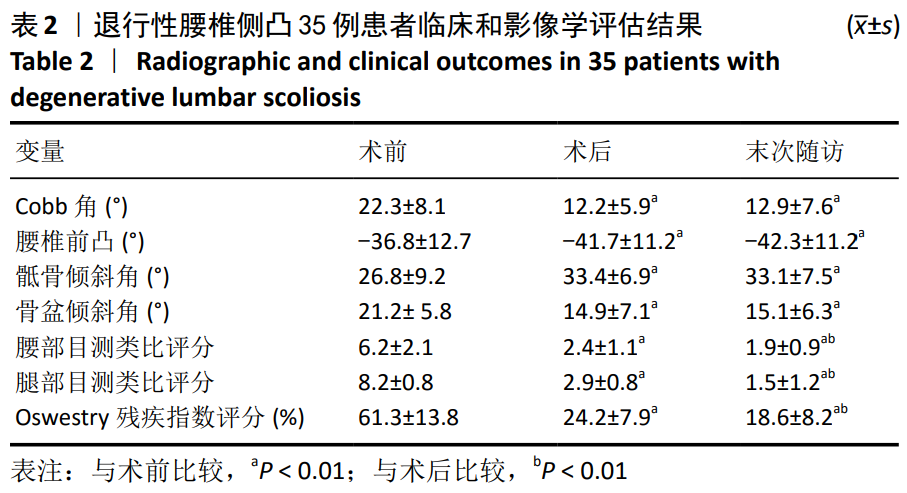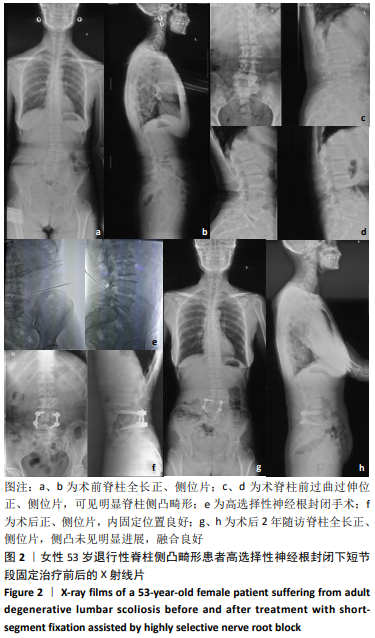[1] WONG E, ALTAF F, OH LJ, et al. Adult Degenerative Lumbar Scoliosis. Orthopedics. 2017;40(6):e930-e939.
[2] 张希诺,孙祥耀,海涌.成人退行性脊柱侧凸长节段融合术后内科并发症危险因素分析[J].中国骨与关节杂志,2018,7(10):725-730.
[3] 张耀申,杨晋才,周立金,等.成人退行性脊柱侧弯临床分型的研究进展[J].中华医学杂志,2017,97(9):717-720.
[4] GRAHAM RB, SUGRUE PA, KOSKI TR. Adult Degenerative Scoliosis.Clin Spine Surg. 2016;29(3):95-107.
[5] 牛晓健,张莹,杨思振,等.退行性脊柱侧凸长节段固定融合手术早期并发症的危险因素分析[J].中国脊柱脊髓杂志,2019,29(3): 206-212.
[6] WANG C, CHANG H, GAO X, et al. Risk factors of degenerative lumbar scoliosis in patients with lumbar spinal canal stenosis.Medicine (Baltimore). 2019;98(38):e17177.
[7] ZHANG XL, YUAN L, ZENG Y, et al. Advance in evaluation of lumbar function after long fixation of degenerative scoliosis.Zhonghua Wai Ke Za Zhi.2019;57(5):397-400.
[8] DICKERMAN RD, EAST JW, WINTERS K,et al. Anterior and posterior lumbar interbody fusion with percutaneous pedicle screws: comparison to muscle damage and minimally invasive techniques.Spine (Phila Pa 1976). 2009;34:E923-925.
[9] MUMMANENI PV, TU TH, ZIEWACZ JE, et al. The role of minimally invasive techniques in the treatment of adult spinaldeformity.Neurosurg Clin N Am.2013;24: 231-248.
[10] CHO K, SUK S, PARK S, et al. Complications in posterior fusion and instrumentation for degenerative lumbar scoliosis.Spine(Phila Pa 1976). 2007;32:2232-2237.
[11] WANG Y, HAI Y, LIU Y, et al. Risk factors for postoperative pulmonary complications in the treatment of non-degenerative scoliosis by posterior instrumentation and fusion. Eur Spine J.2019;28(6): 1356-1362.
[12] WANG K, ZHANG C, CHENG C, et al. Radiographic and Clinical Outcomes following Combined Oblique Lumbar Interbody Fusion and Lateral Instrumentation for the Treatment of Degenerative Spine Deformity: A Preliminary Retrospective Study. Biomed Res Int.2019;2019:5672162.
[13] SHUFFLEBARGER H, SUK SI, MARDJETKO S. Debate:determining the upper instrumented vertebra in the management of adult degenerative scoliosis: stopping at T10 versus L1.Spine (Phila Pa 1976). 2006;31: S185-194.
[14] CHO KJ, SUK SI, PARK SR, et al. Selection of proximal fusion level for adult degenerative lumbar scoliosis.Eur Spine J.2013;22:394-401.
[15] POLLY DW JR, HAMILL CL, BRIDWELL KH. Debate: to fuse or not to fuse to the sacrum, the fate of the L5-S1 disc.Spine (Phila Pa 1976). 2006; 31:S179-184.
[16] HWANG DW, JEON SH, KIM JW, et al. Radiographic progression of degenerative lumbar scoliosis after short segment decompression and fusion.Asian Spine J.2009;3:58-65.
[17] WANG N, WANG D, WANG F, et al. Evaluation of degenerative lumbar scoliosis after short segment decompression and fusion.Medicine (Baltimore).2015;94:e1824.
[18] ANDERBERG L, SAVELAND H, ANNERTZ M. Distribution patterns of transforaminal injections in the cervical spine evaluated by multi-slice computed tomography.Eur Spine J.2006;15:1465-1471.
[19] DAFFNER SD, VACCARO AR. Adult degenerative lumbar scoliosis.Am J Orthop (Belle Mead, NJ). 2003;32:77-82. |
